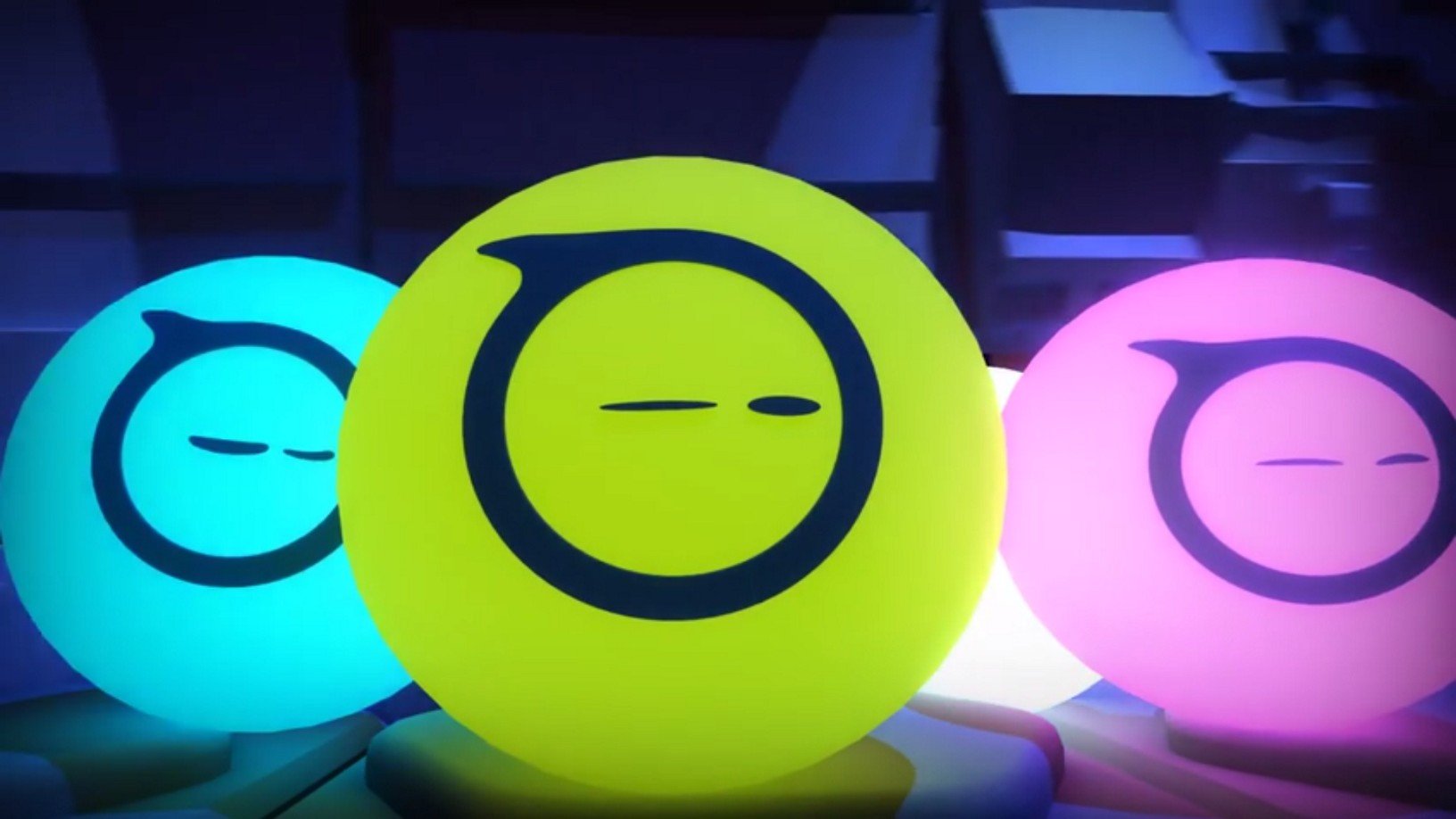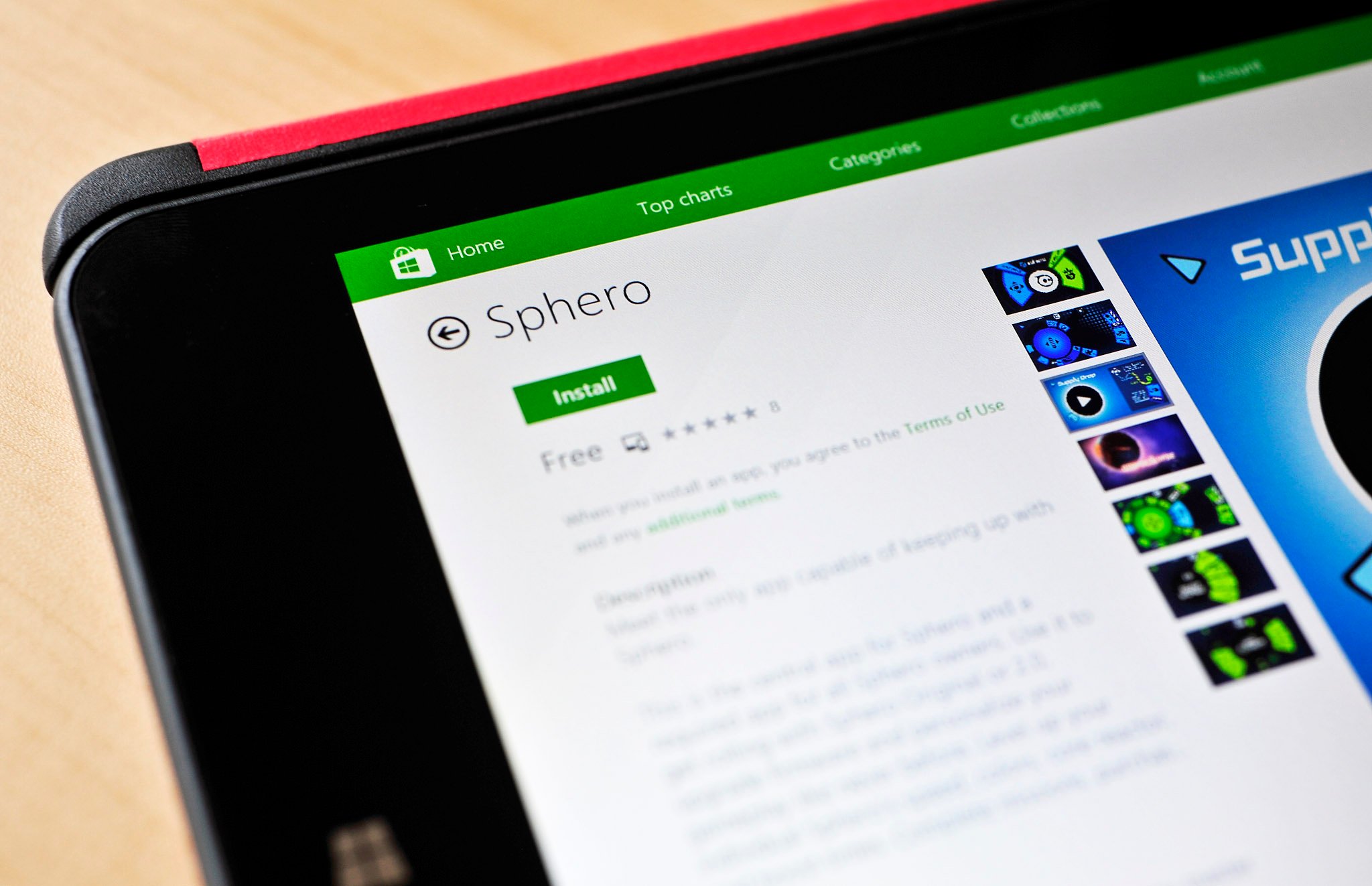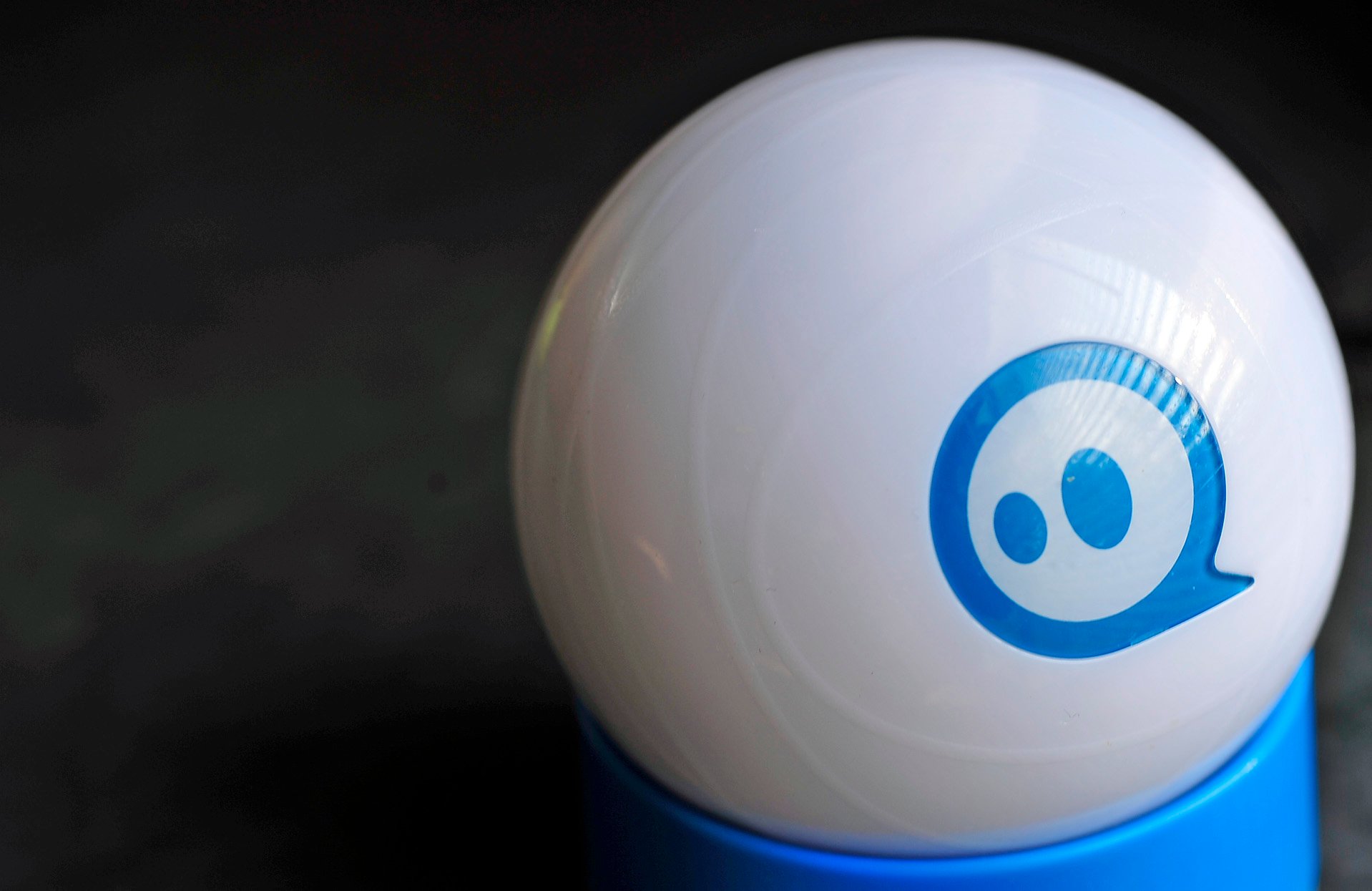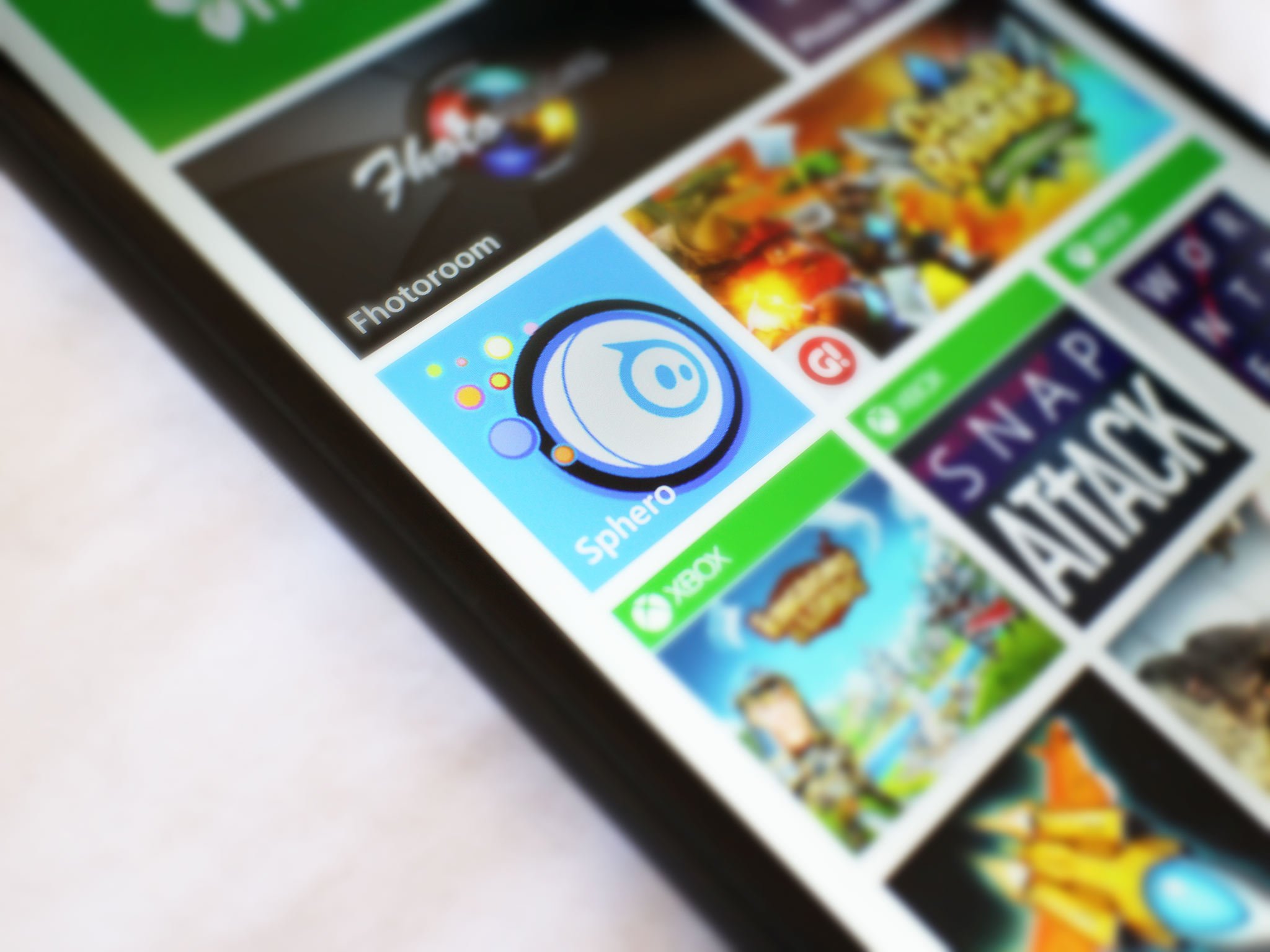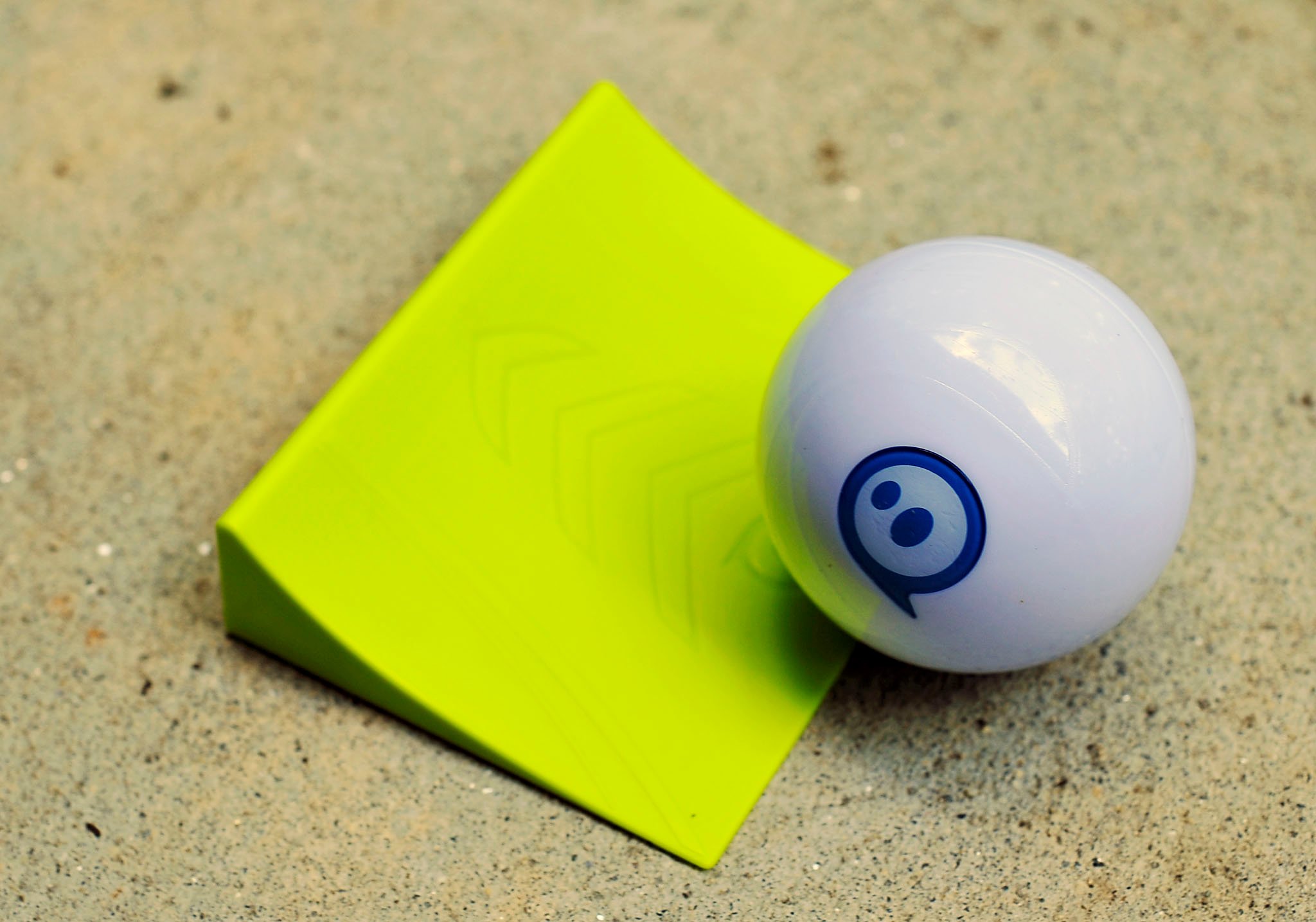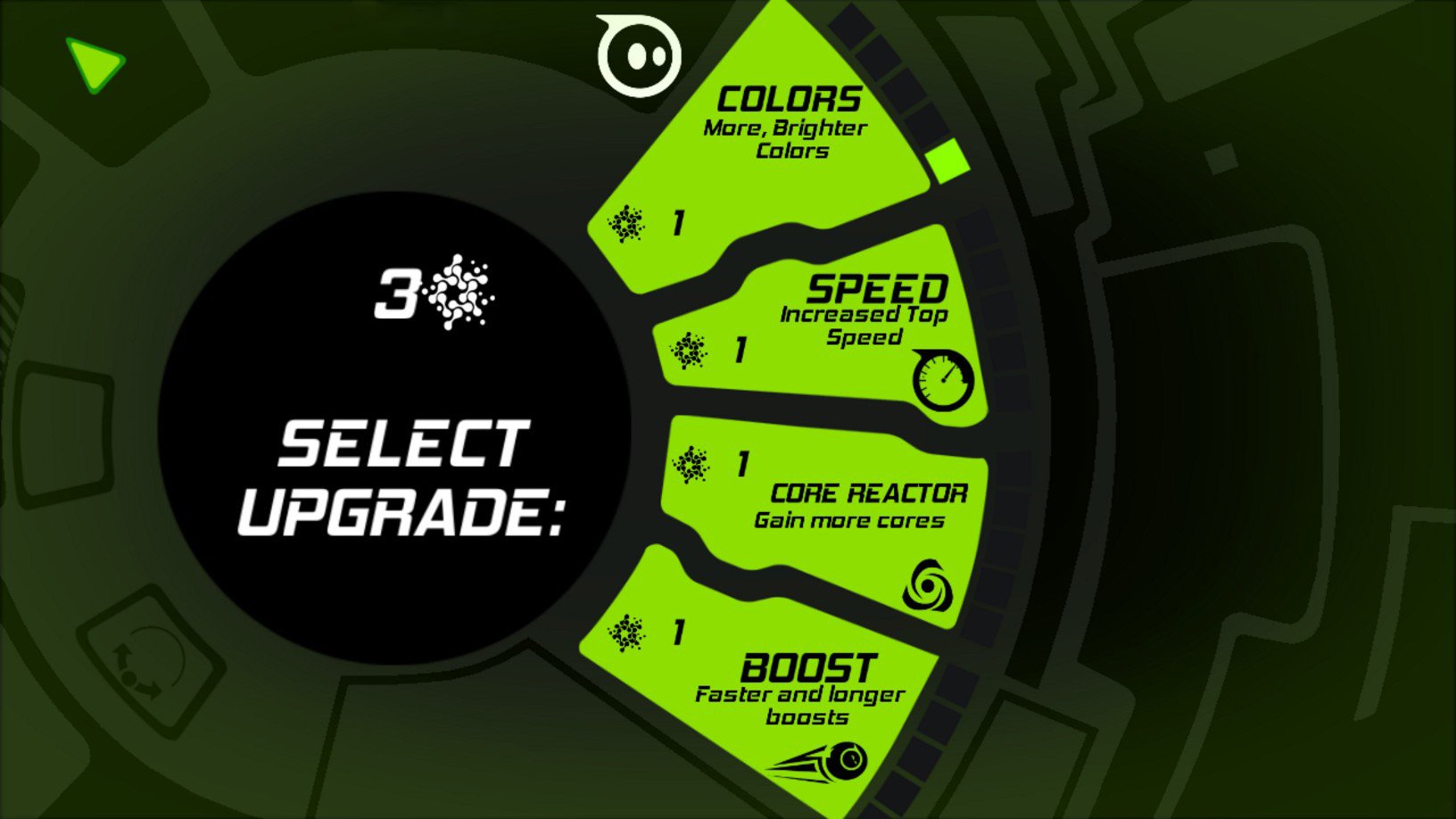Sphero 2.0 is the little ball that could for Windows and Windows Phone (Hidden Gems)
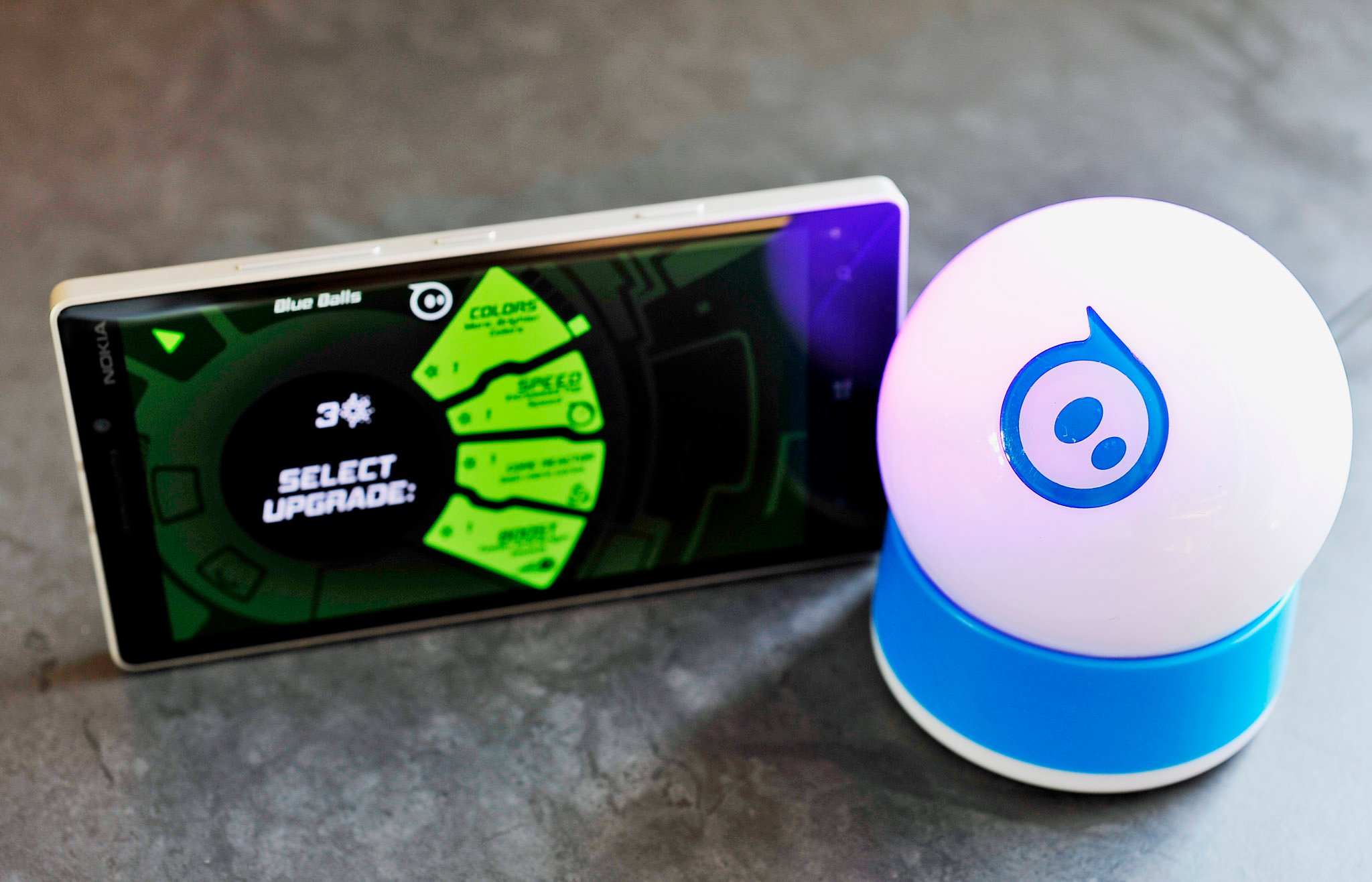

When I was growing up, RC cars and remote controlled gizmos were always underwhelming unless you could afford the 'big boy' toys preferred by hobbyists. In 2014, not only are connected devices becoming mainstream, the way we control them has shifted from dedicated controllers to our phones and tablets.
Sphero 2.0 (2013) follows on the footsteps of Sphero 1.0 from 2011 and is made by Orbotix. In essence, it is a ball that rolls around, controlled through your phone or computer. On the face of it, Sphero sounds…temporary, as in you have fun with it but only for a short time. After all, how fun can it be just to drive a ball around the house.
Turns out, it is damn fun. Watch our video review of Sphero 2.0 for Windows Phone and Windows to get an idea why. Remember, by leaving a comment, FIVE of you can win your very own Sphero 2.0 orb!
How Sphero works
Sphero 2.0 connects up to your Windows Phone 8.0 device or tablet through Bluetooth 4.0 LE. For those using the Preview for Developers and Windows Phone 8.1, you may have issues due to those LE drivers being disabled, at least until you receive Lumia Cyan proper. The pairing is straight forward, though like all things Bluetooth there can be occasional hiccups. Sphero pairs both through the Bluetooth and then you need to launch the companion controller app, which makes the final connections. Once setup, you are ready to, ahem, roll.
You can download the Sphero software for Windows Phone and Windows below:
How much is it?
Sphero runs for about $120 at various locations ( Amazon, which is a bit pricey for is a toy. Having said that, it is an impressive toy that may provide you with hours of fun and relaxation (maybe not for your pets).
You can also optionally buy the Nubby cover, which lets Sphero grip the ground better for outside usage (and it offers some protection).
All the latest news, reviews, and guides for Windows and Xbox diehards.
How is that fun?
So the $120 question is how much fun can you possibly have driving a ball around your house? It is a good question, because, after the novelty of moving the glowing orb around wears off, it seems obvious that boredom would set in. However, Orbotix did something unique around Sphero that keeps me interested: they told a story.
When a user first launches the Sphero software, they are presented with two options: 'Just Drive' or 'Level Up.' If you choose the latter, a high quality introduction movie tells the story of Sphero, including the drama of his planet and the 'Orbpocalypse' and the 'Anti-prism.' It is all tongue and cheek and quite entertaining. Once past the movie (you can always tap to skip), the app does a real good job of explaining the controls and how everything works.
If I had to describe Sphero 2.0, it would be like a game using the real world around you. Orbotix keeps things stimulating by constantly giving you incentive to use Sphero. For instance, the more you use Sphero, the more experience points you collect, and you can 'level up.' Those points (cores) can then be redeemed to unlock features in Sphero, including speed, agility, turbo boosts, customized colors, and even neat tricks. That is right Sphero has a few tricks including "jump" (more like a hop), freaking out like R2D2 from Star Wars and others.
Indeed, Sphero 2.0 starts off slow and hard to control. However, as you use him more and refine your ability to control him, you are rewarded by attaining higher speeds. It is a safe way to lure you into Sphero without causing too much frustration due to him being uncontrollable.
There is also humor. If you bump Sphero into a wall at full speed, he makes an "ouch" like exclamation.
Missions
The missions themselves, always with a choice of three, are witty and creative. For instance, one has you search for Tetron Agents, which means you drive Sphero around to find them. What is happening is the app has an invisible mapping component and when Sphero rolls over certain points, you find the agents. Often, these hunting missions involve Sphero acting like a beacon: as he gets closer, he starts to blink faster with an accompanying sound (it reminds of the movie 'Aliens' when the aliens are coming through the ceiling with the humans tracking them).
Another type of mission has you purposefully crash into objects to either "smash the Tetrons" or shake them off of Sphero. It is an ingenious way to let your Sphero rage out by purposefully running into things. The frustrating part is when your mission is to ram into things, suddenly you are the best Sphero navigator in the world.
A third mission is the opposite of the above: you need to maintain control, which helps teach you finer grained controls of Sphero's movements.
As your reward for these missions, you unlock more points and cores, letting you upgrade and improve Sphero. That to me is the fun part. Sphero 2.0 is not a static orb, but something that "grows" as you use it more.
Control and charging (and ramps)
Sphero 2.0 comes with its own base station for recharging. Placing Sphero on the station shuts him down and begins the charging process, flashing random colors to let you know the process has initiated. To turn on Sphero, you just place it on the floor and double tap to "wake him up." Battery life is impressive, or rather I have not used it for long enough periods to make it power down.
The controls can be finicky, though, as anyone who has used remote control devices tells you, it is all about practice. You do often have to calibrate Sphero by dragging his "tail" around until it faces you. That sets Sphero's orientation relevant to you and your controller. You can control Sphero through a traditional D-pad like interface or use tilting of the phone or tablet. Personally, tilting is way too odd, so I always opt for the D-Pad.
The apps for Windows and Windows Phone are universal, so they translate exactly. That is great if you like switching and your Sphero's progress is stored in the ball, meaning you can your progress over from device to phone or vice versa. I think the design of the apps is engaging, and I like the animations a lot as they add character.
Out of the box, you get the instructions, charging base and even two ramps. I am not good enough to use the ramps yet, but it is neat that they are there. Maybe someday.
Conclusions
The first time I saw Sphero at CES I thought it was 'cool' but didn't see it more than a novelty. However, I have to admit that the game and story element has changed my opinion. Sphero is more than clever, and it reminds me of some of the first interactive toys twenty years ago (Captain Power, anyone?). Is it worth the $120? Like many things in technology, it depends on your interest and disposable income. Assuming the money is not an issue, then yeah, Sphero 2.0 is a blast and just another silly mini-game you can play using real-world objects around you. It is pure geeky fun. I am not sure I would drop everything to go get one, but I am super awestruck that such things exist today. You may not be impressed at first, but when you think about the technology and development that goes into Sphero, it is something to think about.
The software for Windows and Windows Phone demonstrate the power of universal apps, and although they started off buggy, Orbotix is updating the apps on a regular basis, addressing concerns and flaws (I used version 1.1.6 in this review). I should note that the Sphero has accessible APIs, so there are third-party controller apps too like 'Sphero Drive' and 'Sphero Control' on the Store; while not as pretty, they are more streamlined and stripped down if you prefer that choice.
Finally, I should mention that Sphero Ollie (2b) is coming out later this year, which looks even more fun. I managed to interview some of the Orbotix team this year at CES, so check out that video above and make sure you watch our video review to see it all in action for Windows Phone and Windows!
What do you think of connected toys like Sphero – passing fad or is it the future? Let us know in comments and don't forget to check our other Hidden Gems!
Thanks to Mark Guim for the work on the video review

Daniel Rubino is the Editor-in-chief of Windows Central. He is also the head reviewer, podcast co-host, and analyst. He has been covering Microsoft since 2007 when this site was called WMExperts (and later Windows Phone Central). His interests include Windows, laptops, next-gen computing, and wearable tech. He has reviewed laptops for over 10 years and is particularly fond of 2-in-1 convertibles, Arm64 processors, new form factors, and thin-and-light PCs. Before all this tech stuff, he worked on a Ph.D. in linguistics, performed polysomnographs in NYC, and was a motion-picture operator for 17 years.
